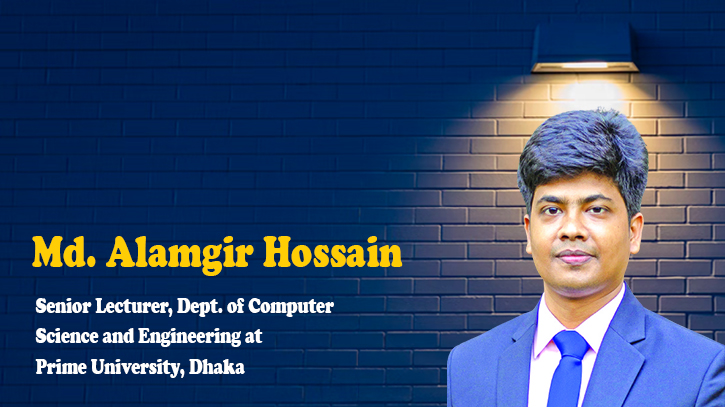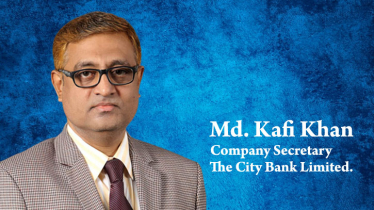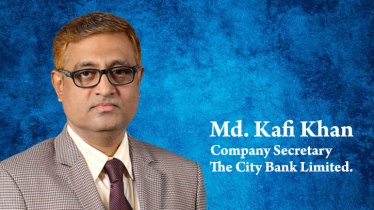
Photo : Messenger
Social media has woven itself into the fabric of our daily lives, connecting us with friends and family, keeping us informed, and even helping us in our careers. It’s a digital square where we share moments, photographs, videos, thoughts, and interests, making distances seem trivial. This vast network, however, isn’t just a space for connection and sharing; it’s also become a treasure trove of personal information, making it a prime target for hackers in the 21st century.
In recent years, we’ve seen a worrying uptick in social media hacking incidents. These aren’t just isolated attacks; they’re part of a growing trend that affects millions worldwide. Hackers exploit weaknesses for various reasons, from stealing identities to spreading misinformation or even for financial gain. This rise in cyber threats has made securing our online presence more crucial than ever. Recognising the urgency of the situation, this article aims to shed light on the darker corners of the internet. We’ll delve into the common ways hackers infiltrate social media accounts and offer practical advice to fortify our digital defense.
Understanding the threats lurking in the digital shadows is crucial for anyone navigating the social media landscape. Let’s break down some of the most common hacking techniques that threaten our online safety.
Phishing Scams often come disguised as harmless emails or messages from familiar sources, tricking users into giving away their login details. Imagine receiving an email that looks like it’s from a social media platform, asking you to update your password. You click the link, enter your details, and without realising it, you’ve just handed the keys to your digital kingdom to a hacker. Imagine you receive an email that looks exactly like it’s from your favourite social media platform. It warns you about an unauthorised login attempt and asks you to click a link to verify your account. The link leads to a fake login page designed to capture your credentials. These scams rely on deception and our trust in familiar brands to breach our defenses.
Malware attacks are another tool in the hacker’s arsenal. This malicious software can sneak onto our devices through a dodgy download or even a seemingly innocuous link. Let’s say you click on an innocent-looking link or download an attachment from a “friend” on social media. Unbeknownst to you, this action installs malware on your device. This software can spy on your online activities, steal personal information, and even take control of your social media accounts to spread the malware further.
Account impersonation is a more direct assault on our digital identity. In this scenario, a hacker gains access to or creates a copy of your social media profile. For example, after obtaining some of your personal information, perhaps through a different breach, a hacker creates a new account that looks remarkably like yours. They then send friend requests to your contacts. Your friends, thinking it’s you, accept the requests. The hacker can now send them phishing messages, spread malware, or even ask for money, all under your guise. It’s not just a violation of your privacy; it can damage your reputation and relationships.
Social media accounts are prime targets for hackers due to the wealth of personal information they contain and the trust we place in these digital platforms. By breaching an account, hackers can harvest personal data for identity theft or even sell it on the dark web, turning a profit at the expense of your privacy.
Furthermore, because friends and followers are more likely to trust messages coming from a known account, hackers use compromised profiles as conduits for spreading malicious software, effectively amplifying the damage. Additionally, with more platforms storing payment information and facilitating financial transactions, gaining access to a social media account can also mean direct paths to financial fraud, either by directly tapping into saved payment methods or by convincing contacts to send money under false pretenses. This multifaceted potential for exploitation underscores the importance of securing our social media accounts against unauthorised access.
Securing your digital footprint is crucial in today’s interconnected world, where our personal and professional lives often intersect online. One fundamental step is to ensure the strength and uniqueness of your passwords. A strong, complex password acts like a robust lock on the door to your digital life, making it harder for intruders to break in. Think of it as a puzzle that only you can easily solve because it’s composed of a mix of letters, numbers, and symbols that don’t form recognisable words or dates.
Another vital layer of defense is two-factor authentication (2FA), which adds an additional step to the verification process when logging into your accounts. Even if a hacker manages to decipher your password, they would be stopped in their tracks without access to the second factor, which is often a code sent to your phone or generated by an app. It’s like having a second lock for which only you have the key.
Regular security audits of your social media accounts are equally important. This involves routinely checking for any login activity from unrecognised devices or unfamiliar locations. If you notice any unusual activity, it could be a sign that someone has gained unauthorised access to your account. Regular audits are akin to periodically checking the integrity of your digital locks and alarms, ensuring they’re always in working order to protect your valuable online presence.
Being digitally savvy in today’s interconnected world means more than just knowing your way around social media platforms; it’s about safeguarding your online presence with smart habits and heightened awareness. First and foremost, learning to recognise phishing attempts is critical. These often come disguised as urgent messages or offers too good to be true, baiting you with links that lead to malicious sites. Look out for spelling mistakes, generic greetings, and requests for personal information—these are red flags.
Equally important is the management of your privacy settings on social media. Take the time to understand the privacy options available on each platform you use. Adjust settings to limit what’s visible to the public and what information you share with friends or followers. This not only protects your personal data but also reduces the risk of being targeted by hackers.
Lastly, the security of your internet connection can’t be overlooked. Public Wi-Fi networks, while convenient, are notorious for security vulnerabilities. Avoid performing sensitive transactions or accessing important accounts on these networks. If you must use public Wi-Fi, consider using a Virtual Private Network (VPN) to encrypt your connection and shield your activities from prying eyes. By adopting these practices, you enhance your digital literacy and build a more secure online environment for yourself and those around you.
The responsibility of ensuring social media is a safe space for users extends beyond individual actions to include the platforms themselves. These digital giants have a pivotal role in developing safer environments through a combination of technology, vigilance, and education. Firstly, platforms are tasked with integrating robust security measures, such as end-to-end encryption, which safeguards messages from being intercepted by unauthorized parties. Moreover, advanced algorithms and monitoring systems are essential for detecting suspicious activities, such as unusual login attempts or patterns indicating potential breaches, ensuring timely intervention before users are harmed.
Educating users on secure online behaviours form another crucial aspect of platform responsibilities. By providing clear, accessible resources and regular updates on how to protect personal information, recognise phishing attempts, and utilise security features, social media companies empower users to be the first line of defense against threats.
Looking ahead, the future of social media security seems promising, with innovations like biometric security—including facial recognition and fingerprint verification—offering more personalised and impenetrable methods of protecting accounts. Additionally, the use of artificial intelligence (AI) and machine learning in preemptively identifying and neutralising threats represents a significant leap forward. These technologies can analyse vast amounts of data to spot anomalies that might elude human oversight, making social media platforms not just reactive but proactively secure.
The battle against cyber threats on social media is not just fought on the digital front but also through the collective efforts of communities and law enforcement. This collaboration is vital to creating a safer online environment for all users.
Reporting and Responding to Threats: Knowing how and when to report suspicious activities on social media is crucial. Users should be encouraged to report any content or interactions that feel unsafe or look suspicious, such as messages asking for personal information or links to unknown websites. Most platforms offer simple reporting tools for this purpose. Timely reporting can help in the quick containment of potential threats, minimizing damage. Law enforcement plays a critical role in this ecosystem, working behind the scenes to investigate reported cybercrimes, track down perpetrators, and bring them to justice. Their preventive measures and swift actions are essential in deterring cybercriminals.
Creating a Culture of Security: Building a culture of security within online and offline communities is about more than just implementing strict measures. It’s about fostering an environment where everyone feels responsible for the collective digital safety. Encouraging open discussions about cybersecurity issues, experiences, and concerns can demystify the subject, making it more accessible and less intimidating for everyone. Moreover, sharing best practices, whether through social media platforms themselves, community forums, or educational programs, helps spread knowledge on how to stay safe online. These practices can range from how to create strong passwords to recognising the latest phishing scams.
In conclusion, securing social media against hackers involves understanding the threats, strengthening account security, being digitally savvy, and recognizing the pivotal role of social media platforms and community law enforcement collaboration. From phishing scams to the promise of AI in cybersecurity, the landscape is complex but navigable with the right knowledge and tools. This battle isn’t just fought by individuals alone; it’s a shared responsibility that requires the collective effort of users, platforms, and authorities. We all play a crucial role in creating a safer digital environment. Let’s commit to adopting secure online habits, staying informed, and actively contributing to a culture of security. Together, we can safeguard our digital lives and ensure that social media remains a space for positive, secure connections.
The writer is a Senior Lecturer, Dept. of Computer Science and Engineering at Prime University, Dhaka. He can be reached at [email protected].
Messenger/Fameema








